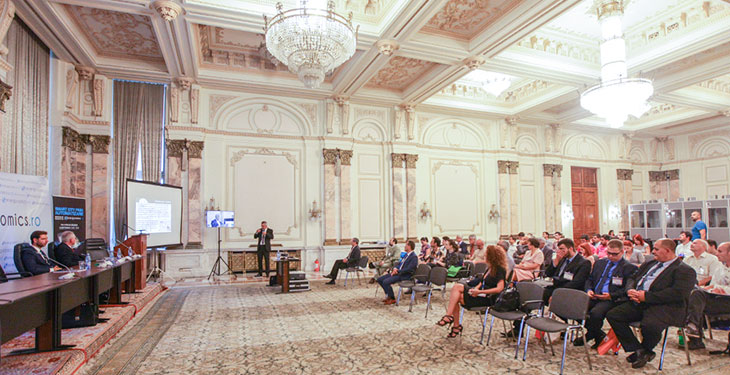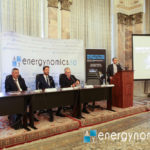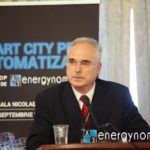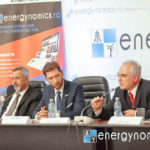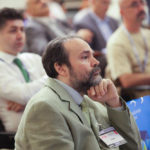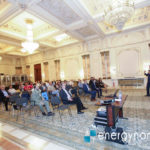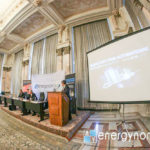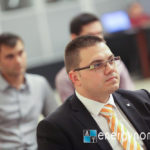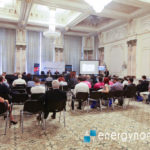Romania has an enormous potential for energy performance growth, from generation to the final consumer, and the automation solutions are the main tools for reduced consumption and increased comfort. The expert speakers present at the “Smart City by Automation” workshop, organized by energynomics.ro, within IEAS 2017, exposed not only technical solutions but also examples of good practices as they resulted from projects already implemented in Romania.
Investments for the environment
Sorin Alecu, Chief of the Reorganization-Efficiency Department of CE Oltenia, presented the investment program of the largest coal based electricity producer in Romania.
He pointed out that almost 45% of the volume of investments is allocated to the environmental commitments (9,91%) assumed by Romania’s Accession Treaty to the European Union and to the reimbursement for the credits committed for this purpose (34,97%). In total, CE Oltenia has invested about one billion euros in environmental investments out of which:
- 465 million euros for the desulphurization facilities
- 224 million euros for dense sludge plants
- 50 million euros to upgrade electrofilters
“We see the investments for the environment as an important contribution to the quality of life, especially as one of our production units is now inside the city of Craiova as a result of the urban development in the last decades”, said Sorin Alecu.
DOWNLOAD THE PRESENTATION OF SORIN ALECU
The CE Oltenia representative also referred to the automation installations for Distributed Control Systems (DCS) within the complex, as well as to the 105 thermal power stations for which SE Craiova supplies the heat. “Currently, there are 26 thermal points that where automated “, said Sorin Alecu.
Complete solutions from a global leader
Răzvan Copoiu, vicepresident of the Industry Division for South Eastern Europe, Schneider Electric, presented EcoStruxure, the concept that integrates the solutions and expertise of a global company with a turnover of nearly € 25 billion and about 140,000 employees in more than 100 countries. “The EcoStruxure platform allows the connection of the equipment, the finest control and the transfer of information into applications, analytical solutions and management services”, explained Răzvan Copoiu. The buildings segment (for offices) represents the area with the most pronounced development during this period, but there are also municipalities interested in Schneider Electric solutions.
DOWNLOAD THE PRESENTATION OF RĂZVAN COPOIU
A smart city is a system of systems – water, energy, transport, emergency response, built environment, etc. – and each has influences on each other. The 5 major imperatives identified by Schneider Electric are:
MOBILITY Effective and productive city services depend on the mobility of its workforce.
EFFICIENCY Buildings consume 1/3 of the worlds energy and primarily in city urban areas.
SUSTAINABILITY Cities are substantially improving their interest in CO2 emissions reduction, incorporating renewable energies, and improving water resources & water loss reduction.
RESILIENCY Cities must be prepared and responsive to natural disasters and tumultuous weather patterns, terrorist attacks, and the like.
RELIABILITY Smart cities must ensure reliable power and transportation.
For each of these needs, Schneider Electric has the best quality solutions, said Răzvan Copoiu.
Integrated energy management in the city of Cluj-Napoca
Ştefan Opriş, Marketing Manager at LISSCOM, presented the smart energy management system implemented in the city of Cluj-Napoca. The LISSCOM-Braşov company provided the concept, execution, assembly, service and maintenance of a city-level system for the management of thermal energy in 73 buildings (schools, universities, dormitories, canteens, sports halls, kindergartens, block of flats) coordinated from a single data center by a single operator.
The system allowed for significant savings on energy consumption, but also for administrative savings.
In partnership with the German company Gesellschaft Für Regelungstechnik (GFR), Lisscom has achieved remarkable performance that fully justifies the initial investment, explained Stefan Opriş:
- reducing natural gas consumption: 20 ÷ 26%
- reducing electricity consumption: 20 ÷ 30%
- reduction of water consumption: 10 ÷ 70%
- reduction of the premature wear of equipment: 20%
- reducing maintenance costs: 15%
- reducing production losses (perishable goods: 8%
Based on the data from the National Institute of Statistics and INCD URBAN-INCERC, the Lisscom representative highlighted the differences between the energy performance of buildings in the public education system (354 kWh / sqm / year) and those of the other sectors (200-250 kWh / sqm / year).
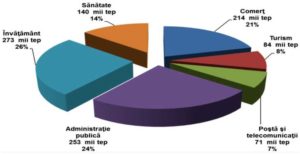
These are figures that, simply by themselves, suggest that the administrators of these buildings – from school principals, mayors and municipal energy managers – should decide to modernize energy systems with cost, efficiency, safety and convenience benefits for all the parties involved.
DOWNLOAD THE PRESENTATION OF ŞTEFAN OPRIŞ
More than 40 participants animated the talks opened with the presentations and gave the speakers the opportunity to develop the ideas presented.
The workshop “Smart City by Automation” was organized within IEAS 2017 where the energynomics.ro team is present with its own stand and launched the most recent issue of the energynomics.ro Magazine.
